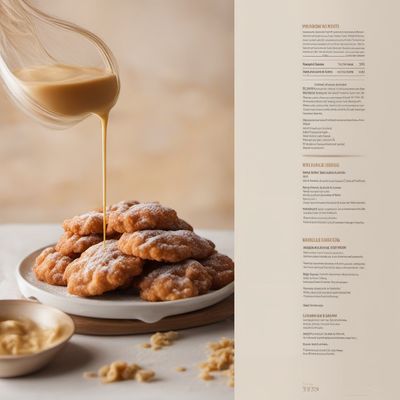
Dish
Crema fritta
Crema fritta is made by cooking custard until it thickens, and then spreading it out on a baking sheet to cool. The cooled custard is then cut into squares and coated in breadcrumbs. The squares are then deep-fried until crispy. The result is a crispy, creamy dessert that is perfect for any occasion.
Origins and history
Crema fritta originated in Italy and is a popular dessert throughout the country. It is believed to have been created by Italian nuns who used leftover custard to create a new dessert. It is often served at special occasions, such as weddings and holidays.
Dietary considerations
Crema fritta contains dairy and gluten, making it unsuitable for those with lactose intolerance, dairy allergies, or celiac disease. It is also high in fat and calories, so should be consumed in moderation.
Variations
There are many variations of crema fritta, including those made with different types of custard or coatings. Some recipes also call for the addition of fruit or nuts. In some regions of Italy, crema fritta is made with rice instead of custard.
Presentation and garnishing
To make the perfect crema fritta, be sure to use high-quality custard and breadcrumbs. Deep-frying at the right temperature will ensure that the squares are crispy on the outside and creamy on the inside. Crema fritta can be presented on a platter with toppings on the side. It can be garnished with fresh fruit or mint leaves.
Tips & Tricks
When deep-frying crema fritta, be sure to use a deep pot or fryer to prevent oil splatters. It is also important to let the squares cool for a few minutes before serving to prevent burns. Leftover crema fritta can be stored in an airtight container in the refrigerator for up to 2 days.
Side-dishes
Crema fritta can be served with a variety of toppings, including powdered sugar, chocolate sauce, or fruit compote. It is also often served with a glass of dessert wine, such as Moscato d'Asti.
Drink pairings
Crema fritta pairs well with sweet dessert wines, such as Moscato d'Asti or Vin Santo. It can also be served with coffee or tea.
Delicious Crema fritta recipes
More dishes from this category... Browse all »

A-gei
Taiwanese cuisine

Abará
Brazilian cuisine

Aburaage
Japanese cuisine

Acciughe sotto pesto
Italian cuisine

Accra
West African cuisine

Aggala
Indian cuisine

Airplane Olive
Greek cuisine

Alaisa fa'apopo
Samoan cuisine
More cuisines from this region... Browse all »

Abruzzese and Molisan cuisine
Savory, Earthy, Rustic, Hearty

Apulian cuisine
Fresh, Savory, Rustic, Simple

Arbëreshë cuisine
Savory, Tangy, Herbaceous, Spicy

Basilicatan (Lucanian) cuisine
Savory, Earthy, Rustic, Hearty

Ligurian cuisine
Light, Delicate, Herbaceous, Salty

Lombard cuisine
Rich, Savory, Meaty, Cheesy

Neapolitan cuisine
Bold, Savory, Spicy, Tangy, Fresh

Roman cuisine
Fresh, Light, Herbaceous, Tangy, Savory

